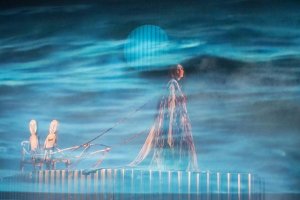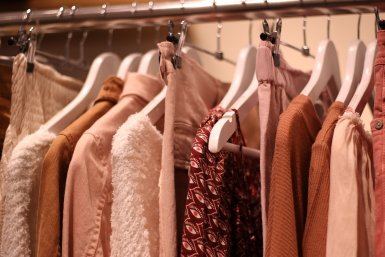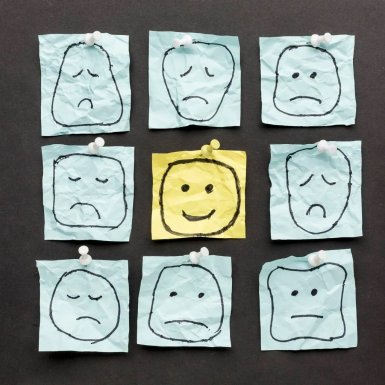The other day in the Russian Ethnographic Museum (REM) opened the exhibition “In harmony with red: Turkmens”, which will run until January 23, 2022, Piter.TV reports.
The exhibition presents carpets, ornaments for yurts, traditional clothes of the Turkmen. All products are made in red.
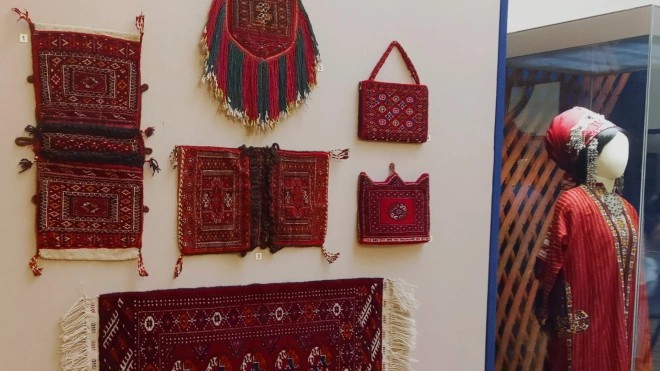
Photo: Piter.TV
Olga Starostina, a researcher at the Department of Ethnography of the Peoples of Central Asia of the REM, said that 70% of this large museum collection was first published, noting that the unique exhibit of this exhibition is complete equestrian equipment.
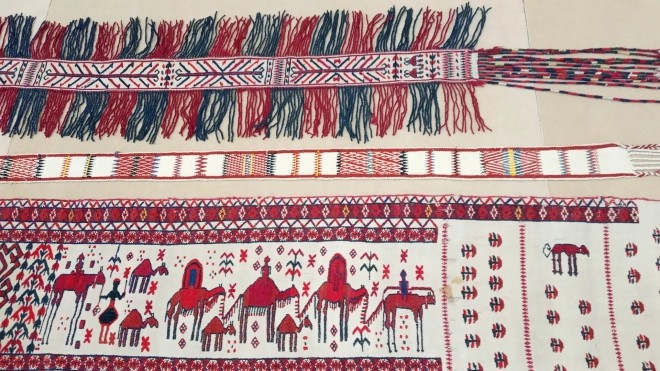
Photo: Piter.TV
The collection of Turkmen carpets, jewelry and clothing began in 1901. Most of the collection was donated to the museum by the famous collector Samuil Dudin at the beginning of the 20th century and by the ethnographer Anna Morozova half a century later. The collection continues to grow to this day.

Photo: Piter.TV
In the modern world, red is usually a symbol of danger, anxiety and fear, but surrounded by Turkmen red you feel comfortable - shades of color seem calm and warm, the source notes. This color appeared in the life of the Turkmen thanks to the unpretentious “madder” plant growing on the saline soils of Turkmenistan. People learned not only to get a dye from a plant, but also found mordants, thanks to which all shades of red were born: from white-pink to ink. Red was considered by the Turkmen as a symbol of youth, health, fire, hearth and sun.
The persistent natural dye allowed the Turkmens not only to make the things they needed in everyday life beautiful, but also made skillfully created products not subject to heat, snow and rain: they could serve for two hundred years without losing color, texture and quality.
In traditional culture, there are no superfluous things, the source notes, and even everyday things are considered as art. “Unnamed Rembrandts”, as the Piter.TV correspondent poetically calls the Turkmen, are people who surrounded themselves with beauty in a nomadic life, where the weaver did not have a large camp and a set of tools - only a carpet nail, a carpet-weaving knife and four sticks- forks.
The best carpets in the world were once woven on such primitive looms. The Turkmen carpet is recognized as the best in the world in terms of knitting density and wear resistance, it can last up to 300 years in active wear, the source emphasizes.

Photo: Piter.TV
Among the patterns on children's hats, women's robes, camel capes, the sign of the tree of life is most often repeated, camels were depicted on wedding canvases - a symbol of prosperity. Jewelry was made of silver, covered with gilding and ornamented with carnelian - a red-orange mineral.
Clothes and linens were often supplemented with cords twisted into dense multi-colored ropes and tassels. An important meaning of collecting vital energy was laid in these elements: the threads were considered to be rays collected into one whole, and the knot “fixed” these rays with happiness. The same technology was used to make amulets, bracelets and belts.


